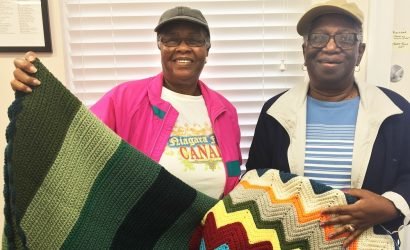Each November we celebrate National Hospice Month. This is a time to step up our efforts to help our community understand how hospice care can benefit both the patient who has a life-limiting condition and his or her loved ones.
Coastal Hospice educates at speaking engagements for any group, in one-on-one meetings, and in publications, from brochures to newsletters. In the past year or so, we have found resources to invest in advertising that describes the improved quality of life our patients realize, especially when they come to us while they are still able to participate in their care. Having time in hospice care allows them to enjoy the company of a volunteer, experience the security of a team available on call 24/7 or perhaps walk a spiritual journey. As a result of our outreach efforts, the number of patients and families we serve is growing. As I write this, there are 187 patients in our care; last year on this date, there were 147; five years ago, 126.
That increase doesn’t mean that more people in our community are dying. What it does mean is that more people are taking advantage of the support of a hospice physician, nurse, aide, social worker, spiritual counselor and volunteer who all put the patient’s goals and needs first. That’s our promise, and it is central to the hospice philosophy.
Serving a growing number of patients can mean something else: While many of the patients and families have a clear understanding of the patient’s prognosis and of hospice care, a growing number do not. When Congress created the Medicare Hospice Benefit 33 years ago, it was limited to those expected to live six months or less if the disease or condition followed it’s normal course (patients who live longer can be recertified for coverage if still eligible). That six-month provision holds today. Yet when many patients are referred for hospice care, this has not been explained to them in a clear way. Many are referred much later than that, when there are only days or weeks left. Nationally and locally, one third of all hospice patients are referred in their last few days of life. For some, the painful and frightening news that the patient has limited time comes first from a Coastal Hospice admissions nurse. Rocked by this news, the patient and family often struggle to absorb the information the nurse or other team members then offer.
For these patients and families, the hospice journey is even harder than it is for others. This year, as we recognize National Hospice Month, please keep in mind those who find themselves or their loved ones closer to the end than they were prepared to accept. Just as they need our care and support, they need the love and understanding of their friends and neighbors.
Alane Capen
President
Coastal Hospice & Palliative Care







